It looks like you're using an Ad Blocker.
Please white-list or disable AboveTopSecret.com in your ad-blocking tool.
Thank you.
Some features of ATS will be disabled while you continue to use an ad-blocker.
share:
I was doing some research for a thread I was going to make on the Olmecs.
I ran across a few things I found rather interesting and decided to change the thread up some.
I hope you enjoy it as much as I did researching and writing it.
I will start by saying that I was looking at some of the links put forth by Gene D. Matlock.
I do not agree with all he is saying but one thing got my attention and got me looking in a different direction than I wanted to go.
Patolli game board of Mesoamerica.

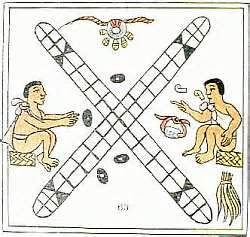
Pachesi game board of India.

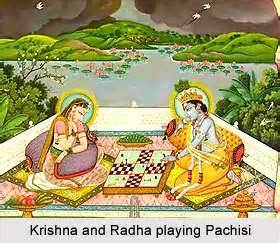
There was a problem with Pachesi though. I could not date it back further than the 16th century. I guess he may have used it for an example because of the similarities in the names. Yet what I found by digging a little deeper really surprised me.
Although Pachesi (Pachisi) may not have been dated to the same time as patolli. There were other games in India and other locations that were VERY similar around the same time frame.
There is an older game in India, dated from around the 4th century called Chaupar. Pachisi may have been created around the same time according to some sources but I can not verify it.
This depicts the Hindu deities Shiva and Parvati playing chaupar.
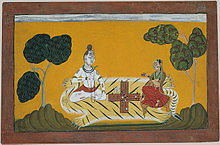
There are many of these games that originated in India. The original may have been a game called an Ashtapada (an 8x8 uncheckered board).
One such game was chaturanga.
Interestingly the Sanskrit caturaṅga is a bahuvrihi compound, meaning "having four limbs or parts" Such as the other games mentioned above.
Chaturanga is the ancestor of our modern day chess. The next picture is of the chaturanga board.
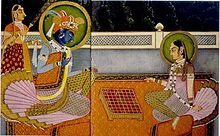
So where did chaturanga come from?
It is believed that the game was developed from an ancient Chinese game called Liubo.
Liubo can be dated back to the middle of the 1st millennium BCE, and was immensely popular during the Han Dynasty (202 BCE – 220 CE).
A pair of Eastern Han Dynasty (25–220 CE) ceramic tomb figurines of two gentlemen playing liubo.
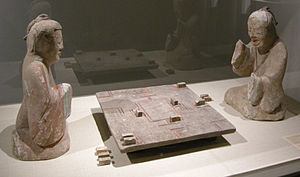
Liubo Mirrors
Liubo Mirror
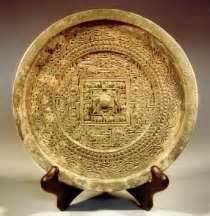
Remind you of anything??
It has been claimed that the Olmecs may have had Chinese ancestry. I find an uncanny resemblance in the Liubo mirror, the Olmec calendar and the Mayan calendar,


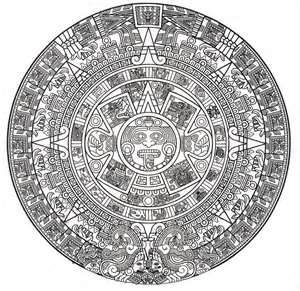
I know that the dates do not add up but I found this interesting especially the resemblance between the Patolli game board of Meso-America and the Indian Chaupar game board.
Can I get your opinion on this? All input is welcome. Perhaps we can learn more by working together.
Quad
PS
Also a couple of more odd things I found while digging around.
It is kind of strange to me how in most of the Sumerian art work of their god(s) one of their legs is almost always exposed from the knee cap down. As illustrated in the following pictures.


Notice anything strange? Look at the exposed knee. If you look close you will see a face where the cap should be. The hem on the rob/skirt looks almost like a head dress. It almost resembles these Olmec statues.
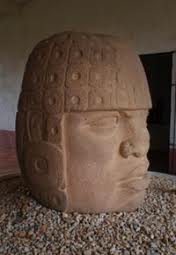
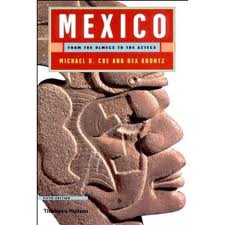
There was also this on language similarities. I can not say how accurate is though, as my research took me in a different direction.
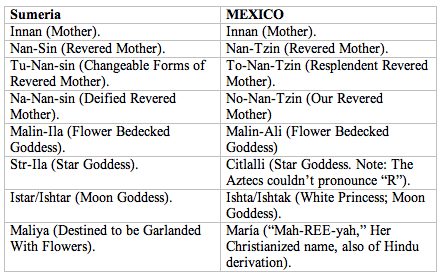
viewzone2.com...
And this from the same site:
We could also go on to talk about the depiction of Elephants in the Mayan culture but perhaps we can address that later in the thread.
Thank you once again for taking the time to read this. I find all Ancient Civilizations VERY interesting and as I said feel free to comment.
Thanks
Quad
I ran across a few things I found rather interesting and decided to change the thread up some.
I hope you enjoy it as much as I did researching and writing it.
I will start by saying that I was looking at some of the links put forth by Gene D. Matlock.
I do not agree with all he is saying but one thing got my attention and got me looking in a different direction than I wanted to go.
. viewzone2.com...
: Mr. Subash Bose displays an ancient Tamil Pachesi board kept as a relic in the temple of his area. The Tamils and all the tribes of Meso-America, from Mexico to Panama, played the same board game: Pachesi.
: The Meso-Americans called it by a linguistically similar name: Patolli. (Note: CH and T are linguistically similar. LL was the only way the Renaissance Spaniards could approximate the sounds of Z and J. This proves that Patolli derived from Pachesi.) I myself saw a Patolli board game at the National Museum of Costa Rica, in San Jose.
Patolli game board of Mesoamerica.


Pachesi game board of India.


There was a problem with Pachesi though. I could not date it back further than the 16th century. I guess he may have used it for an example because of the similarities in the names. Yet what I found by digging a little deeper really surprised me.
Although Pachesi (Pachisi) may not have been dated to the same time as patolli. There were other games in India and other locations that were VERY similar around the same time frame.
There is an older game in India, dated from around the 4th century called Chaupar. Pachisi may have been created around the same time according to some sources but I can not verify it.
This depicts the Hindu deities Shiva and Parvati playing chaupar.

There are many of these games that originated in India. The original may have been a game called an Ashtapada (an 8x8 uncheckered board).
One such game was chaturanga.
Interestingly the Sanskrit caturaṅga is a bahuvrihi compound, meaning "having four limbs or parts" Such as the other games mentioned above.
Chaturanga is the ancestor of our modern day chess. The next picture is of the chaturanga board.

So where did chaturanga come from?
It is believed that the game was developed from an ancient Chinese game called Liubo.
Liubo can be dated back to the middle of the 1st millennium BCE, and was immensely popular during the Han Dynasty (202 BCE – 220 CE).
A pair of Eastern Han Dynasty (25–220 CE) ceramic tomb figurines of two gentlemen playing liubo.

Liubo Mirrors
en.wikipedia.org...
The pattern found on the surface of Liubo boards is also found on the most common type of Han Dynasty bronze mirror, known from their distinctive markings as TLV mirrors. There is some debate over whether the Liubo pattern on these mirrors was simply decorative, or whether it had a ritual significance, or whether perhaps the mirrors doubled as portable Liubo game boards. Zhou Zheng has pointed out that one TLV mirror dating to the reign of Wang Mang (9–23) has an inscription that includes the words "Carved with a Liubo board pattern to dispel misfortune" (刻具博局去[祛]不羊[祥]), which suggests that the main purpose of the Liubo pattern on mirrors was ritual, and that the pattern had a special significance beyond game-playing.-
Liubo Mirror

Remind you of anything??
It has been claimed that the Olmecs may have had Chinese ancestry. I find an uncanny resemblance in the Liubo mirror, the Olmec calendar and the Mayan calendar,



I know that the dates do not add up but I found this interesting especially the resemblance between the Patolli game board of Meso-America and the Indian Chaupar game board.
Can I get your opinion on this? All input is welcome. Perhaps we can learn more by working together.
Quad
PS
Also a couple of more odd things I found while digging around.
It is kind of strange to me how in most of the Sumerian art work of their god(s) one of their legs is almost always exposed from the knee cap down. As illustrated in the following pictures.


Notice anything strange? Look at the exposed knee. If you look close you will see a face where the cap should be. The hem on the rob/skirt looks almost like a head dress. It almost resembles these Olmec statues.


There was also this on language similarities. I can not say how accurate is though, as my research took me in a different direction.

viewzone2.com...
And this from the same site:
BOTH THE MEXICAN INDIANS & TAMILS ATE TAMALES WITH THE SAME NAME!
The Tamils and Turks even gave some of their favorite dishes to the ancient Mexicans, and with the same names! I will name just two of them: Tamales and Corundas. The ancient Tamils were known as Tamils or Tamals. One of their favorite foods was a type of paste or filling wrapped in bamboo husk. Even in Tamil Nadu it is called Tamal. The Michoacanos have a similar triangular shaped tamal called Corunda. In Turkic it would be kur-unda (Turkic dough).
We could also go on to talk about the depiction of Elephants in the Mayan culture but perhaps we can address that later in the thread.
Thank you once again for taking the time to read this. I find all Ancient Civilizations VERY interesting and as I said feel free to comment.
Thanks
Quad
edit on 22-12-2012 by Quadrivium because: fixed pictures
Very nice ...about time some one gets the good stuff going
so many answers,so many questions.I dumb founded for know how.
so many answers,so many questions.I dumb founded for know how.
reply to post by SarnholeOntarable
Figured I would let the 12-21-12 thing die down before I mentioned the Mayans
I just sent a U2U to Slayer, I hope he will give his input. He has been researching these things a lot longer than me.
Thanks for the input Sarn
Figured I would let the 12-21-12 thing die down before I mentioned the Mayans
I just sent a U2U to Slayer, I hope he will give his input. He has been researching these things a lot longer than me.
Thanks for the input Sarn
reply to post by Quadrivium
Interesting to say the least...
The only fibre I can ad to this thread is the following...
When I saw 'game' and 'Pachesi' it immediately trew me back to my time in Japan.
Maybe it's nothing, but to me it rang...
Here is a video about the game Pachiiiin koro-korooo
Interesting to say the least...
The only fibre I can ad to this thread is the following...
When I saw 'game' and 'Pachesi' it immediately trew me back to my time in Japan.
Pachinko (パチンコ?) is a mechanical game originating in Japan and is used as both a form of recreational arcade game and much more frequently as a gambling device, filling a Japanese gambling niche comparable to that of the slot machine in Western gaming.
Maybe it's nothing, but to me it rang...
Here is a video about the game Pachiiiin koro-korooo
I've done some research on liubo (六博) and here is what I found.
Liu means six - that's a no-brainer. Bo means 'gamble'. In Ancient China, board games were seen as a form of gambling, so that is hardly surprising.
'Six' refers to the number of sticks used as the die. Some variants of the game use an actual die, and other variants use more than six sticks, but six sticks are the norm.
So there you have it - liubo is 'six [sticks] gamble'.
Chaturanga means 'four limbs/parts' but usually refers to armies in epics. (At least, that's what Wikipedia says. I don't speak Sanskrit.) This name has very little to do with 'six'. 'Chaturanga' and 'liubo' are not phonetically similar either. The Old and Middle Chinese for 'liubo' are something like 'liukpak' (cf. Cantonese lukbok). Moreover, chaturanga does not use dice. A similar game, chaturaji, uses dice but is a four-player game.
It seems that any connection with liubo must be through ashtapada. Both ashtapada and liubo are spiral race games.
Sources:
history.chess.free.fr...
www.eastling.org...
Wikipedia, both Chinese and English
Liu means six - that's a no-brainer. Bo means 'gamble'. In Ancient China, board games were seen as a form of gambling, so that is hardly surprising.
'Six' refers to the number of sticks used as the die. Some variants of the game use an actual die, and other variants use more than six sticks, but six sticks are the norm.
So there you have it - liubo is 'six [sticks] gamble'.
Chaturanga means 'four limbs/parts' but usually refers to armies in epics. (At least, that's what Wikipedia says. I don't speak Sanskrit.) This name has very little to do with 'six'. 'Chaturanga' and 'liubo' are not phonetically similar either. The Old and Middle Chinese for 'liubo' are something like 'liukpak' (cf. Cantonese lukbok). Moreover, chaturanga does not use dice. A similar game, chaturaji, uses dice but is a four-player game.
It seems that any connection with liubo must be through ashtapada. Both ashtapada and liubo are spiral race games.
Sources:
history.chess.free.fr...
www.eastling.org...
Wikipedia, both Chinese and English
reply to post by TheUltraFantastic
Thanks for the input.
The name is similar but I could not find a connection.
There is so much we have lost over time. I believe that there are many more written records from early civilizations, they are just waiting to be found.
Thanks for the input.
The name is similar but I could not find a connection.
There is so much we have lost over time. I believe that there are many more written records from early civilizations, they are just waiting to be found.
Originally posted by diqiushiwojia
I've done some research on liubo (六博) and here is what I found.
Liu means six - that's a no-brainer. Bo means 'gamble'. In Ancient China, board games were seen as a form of gambling, so that is hardly surprising.
'Six' refers to the number of sticks used as the die. Some variants of the game use an actual die, and other variants use more than six sticks, but six sticks are the norm.
So there you have it - liubo is 'six [sticks] gamble'.
Chaturanga means 'four limbs/parts' but usually refers to armies in epics. (At least, that's what Wikipedia says. I don't speak Sanskrit.) This name has very little to do with 'six'. 'Chaturanga' and 'liubo' are not phonetically similar either. The Old and Middle Chinese for 'liubo' are something like 'liukpak' (cf. Cantonese lukbok). Moreover, chaturanga does not use dice. A similar game, chaturaji, uses dice but is a four-player game.
It seems that any connection with liubo must be through ashtapada. Both ashtapada and liubo are spiral race games.
Sources:
history.chess.free.fr...
www.eastling.org...
Wikipedia, both Chinese and English
I am trying to find the page I had on the connection and will post it when I do (I seem to have deleted it RAWR!!)
But I did find this
The Chinese version of the Mahayana Mahaparinirvana Sutra also mentions the playing of several games, including Liubo, which some have taken as evidence that Liubo was transmitted to India.
The Chinese version of the Mahayana Mahaparinirvana Sutra also mentions the playing of several games, including Liubo, which some have taken as evidence that Liubo was transmitted to India.
I agree with your post and in the op I stated
There are many of these games that originated in India. The original may have been a game called an Ashtapada (an 8x8 uncheckered board).
One such game was chaturanga.
Interestingly the Sanskrit caturaṅga is a bahuvrihi compound, meaning "having four limbs or parts" Such as the other games mentioned above.
Chaturanga is the ancestor of our modern day chess. The next picture is of the chaturanga board.
So where did chaturanga come from?
It is believed that the game was developed from an ancient Chinese game called Liubo.
Liubo can be dated back to the middle of the 1st millennium BCE, and was immensely popular during the Han Dynasty (202 BCE – 220 CE).
I have since discovered that the game of Liubo is much older than I thought.
monroi.com...
Liubo is a mysterious ancient Chinese board game. Reportedly, the earliest surviving remnant of liubo dates from the Shang Dynasty circa 1500 BC. The name liubo comes from Chinese (liu = six, bo = sticks). Most historians believe that liubo was a battle game. The board is argued to be a cosmological, a calendar and a divination instrument. The rules of Liubo are still unknown.
This time line would fall into the time frame that the Olmecs supposedly left China and appeared in Mesoamerica.
I also found a picture of a Shang Dynasty Mirror.
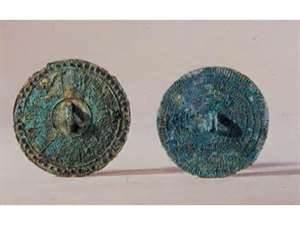
There were supposedly five of these mirrors found from this dynasty but this is the only picture I could find.
I wish I could see the others.
Originally posted by Turkenstein
reply to post by Quadrivium
Very observant, on the knee detail.
Thanks Turk
As soon as I saw the exposed knee cap face I noticed it was very similar to the Olmec statues.
Wonder what the purpose of those faces are? They really look like faces and not just knee caps IMHO.
reply to post by Quadrivium
Have you tried looking in your browser history? It might be lying in there somewhere.
The author of that article obviously isn't a native speaker of Chinese (as he or she claimed that 'bo' means 'sticks'), so I've searched for the cosmology/calendar/divination thingy from Chinese sources. It turns out that a Yale professor called Zeng Lanying noticed the striking ressemblance between the liubo chessboard and a diagram on a bamboo slip from the Yin Wan Han Tomb:
Diagram on bamboo slip:
Liubo board:
I agree with her. They were cast from the same mould. Might this be the connection between the Maya and us?
Here's a mirror that could be Shang or Zhou:
(I did find a mirror that was definitely Shang, but don't want to link there from here because of the nature of that site.)
If you want a collection of these mirrors, regardless of the dynasty, this simple google search will amaze you.
Have you tried looking in your browser history? It might be lying in there somewhere.
The author of that article obviously isn't a native speaker of Chinese (as he or she claimed that 'bo' means 'sticks'), so I've searched for the cosmology/calendar/divination thingy from Chinese sources. It turns out that a Yale professor called Zeng Lanying noticed the striking ressemblance between the liubo chessboard and a diagram on a bamboo slip from the Yin Wan Han Tomb:
Diagram on bamboo slip:
Liubo board:
I agree with her. They were cast from the same mould. Might this be the connection between the Maya and us?
Here's a mirror that could be Shang or Zhou:
(I did find a mirror that was definitely Shang, but don't want to link there from here because of the nature of that site.)
If you want a collection of these mirrors, regardless of the dynasty, this simple google search will amaze you.
The Olmec, Maya, and Aztec all played similar ball games as well. It had deeply spiritual roots (ball represented sun and celestial objects).
The board game is new to me so that's real cool. I believe to the Olmec did come across the land bridge from Asia, before becoming various other Native American people. There are mounds in Illinois that are very similar to Mesoamerican remains. All the later Mesoamerican cultures came from Olmec. They all got the Ball game, hieroglyphs, and calendar from Olmec.
My history book talks about anthropologists comparing South American tribes to Mongolian people and they do look very similar. I think it's very probable that the Inca in South America are descendants of Chinese.
But imagine trying to figure out America 2,000 years from now after stumbling across the ruins of Washington DC in the middle of the swamp.
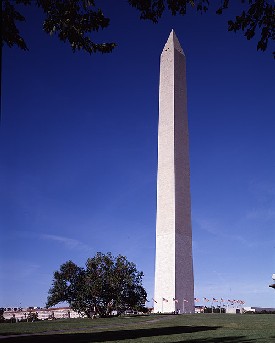

You might end up with a very strange idea of who we were based on our stone monuments that would survive 2,000 years of environmental reclamation.
The board game is new to me so that's real cool. I believe to the Olmec did come across the land bridge from Asia, before becoming various other Native American people. There are mounds in Illinois that are very similar to Mesoamerican remains. All the later Mesoamerican cultures came from Olmec. They all got the Ball game, hieroglyphs, and calendar from Olmec.
My history book talks about anthropologists comparing South American tribes to Mongolian people and they do look very similar. I think it's very probable that the Inca in South America are descendants of Chinese.
But imagine trying to figure out America 2,000 years from now after stumbling across the ruins of Washington DC in the middle of the swamp.


You might end up with a very strange idea of who we were based on our stone monuments that would survive 2,000 years of environmental reclamation.
reply to post by ZeroReady
Linguistically, the Quechua, Mixe-Zoque (of which the Olmec are said to be ancestral) and Mayan langauges seem to be similar to the Sinitic languages.
en.wikipedia.org...
en.wikipedia.org...
Sinitic languages have nearly zero morphology other than compounding. Therefore, when we went to the mall to buy food yesterday, we say 'we go to the shopplace buy eatthing previousday'. This is a stark contrast to the complex conjugations of these Mesoamerican languages. Moreover, Sinitic languages usually have an SVO word order (like English).
This is nothing like the simple syllable structure of the Sinitic langauges. (For instance, in Middle Chinese and Cantonese, the only possible codas are m, n, ng, p, t and k, and most other modern varieties of Chinese have even fewer.)
HOWEVER ...
That is exactly the same as Chinese!
Linguistically, the Quechua, Mixe-Zoque (of which the Olmec are said to be ancestral) and Mayan langauges seem to be similar to the Sinitic languages.
All varieties of Quechua are very regular agglutinative languages, as opposed to isolating or fusional ones. Their normal sentence order is SOV (subject–object–verb). Their large number of suffixes changes both the overall significance of words and their subtle shades of meaning. Notable grammatical features include bipersonal conjugation (verbs agree with both subject and object), evidentiality (indication of the source and veracity of knowledge), a set of topic particles, and suffixes indicating who benefits from an action and the speaker's attitude toward it, although some languages and varieties may lack some of these characteristics.
en.wikipedia.org...
The Mixe–Zoquean languages are head-marking and polysynthetic, with morphologically complex verbs and simple nouns. Grammatical subjects as well as objects are marked in the verb. Ergative alignment is used, as well as direct–inverse systems triggered by animacy and topicality. In Mixe–Zoquean verbs, a morphological distinction is made between two basic clause-types, independent and dependent; verbs take different aspectual and personal affixes, depending on the type of clause in which they appear. There are two different sets of aspect-markers, one used in dependent clauses and another used in independent clauses. Three aspects are distinguished within each clause-type: incompletive, completive, and irrealis.
[edit]
The morphology of Mayan languages is simpler than that of other Mesoamerican languages,[64] yet its morphology is still considered agglutinating and polysynthetic.[65] Verbs are marked for aspect or tense, the person of the subject, the person of the object (in the case of transitive verbs), and for plurality of person. Possessed nouns are marked for person of possessor. There are no cases or genders in Mayan languages.
Proto-Mayan is thought to have had a basic verb–object–subject word order with possibilities of switching to VSO in certain circumstances, such as complex sentences, sentences where object and subject were of equal animacy and when the subject was definite.[66] Today Yucatecan, Tzotzil and Tojolab'al have a basic fixed VOS word order. Mamean, Q'anjob'al, Jakaltek and one dialect of Chuj have a fixed VSO one. Only Ch'orti' has a basic SVO word order. Other Mayan languages allow both VSO and VOS word orders.
en.wikipedia.org...
Sinitic languages have nearly zero morphology other than compounding. Therefore, when we went to the mall to buy food yesterday, we say 'we go to the shopplace buy eatthing previousday'. This is a stark contrast to the complex conjugations of these Mesoamerican languages. Moreover, Sinitic languages usually have an SVO word order (like English).
Mixe–Zoquean languages are characterized by complex syllabic nuclei made up of combinations of vowels together with the glottal stop and /h/ in the proto-language. Complex syllable-final consonant-clusters are also typical in the daughter languages and can be reconstructed for the proto-language.
Proto-Mixe–Zoquean syllable nuclei could be either:
V – short vowel
V' – short vowel with glottal stop
VV – long vowel
V'V – long vowel with medial glottal stop
VV' – long vowel with final glottal stop
Vh – short vowel with h
This is nothing like the simple syllable structure of the Sinitic langauges. (For instance, in Middle Chinese and Cantonese, the only possible codas are m, n, ng, p, t and k, and most other modern varieties of Chinese have even fewer.)
HOWEVER ...
Proto-Mayan (the common ancestor of the Mayan languages as reconstructed[53] using the comparative method) has a predominant CVC syllable structure, only allowing consonant clusters across syllable boundaries.[54] Most Proto-Mayan roots were monosyllabic except for a few disyllabic nominal roots. Due to subsequent vowel loss many Mayan languages now show complex consonant clusters at both ends of syllables. Following the reconstruction of Lyle Campbell and Terrence Kaufman, the Proto-Mayan language had the following sounds;[55] the sounds present in the modern languages are largely similar to this root set.
That is exactly the same as Chinese!
reply to post by diqiushiwojia
Thanks for that post!!
I thought I looked through all of the mirrors, The ones on the page you linked are AMAZING. Thanks.
I think something may be wrong with your "bamboo slip" link though. It is a picture of a little boy
Thanks again for the great content.
Thanks for that post!!
I thought I looked through all of the mirrors, The ones on the page you linked are AMAZING. Thanks.
I think something may be wrong with your "bamboo slip" link though. It is a picture of a little boy
Thanks again for the great content.
reply to post by Quadrivium
Maybe a xenophobic programmer at Baidu decided not to allow foreign IPs to see the slip.
I've uploaded it on ATS for everyone to see:

Maybe a xenophobic programmer at Baidu decided not to allow foreign IPs to see the slip.
I've uploaded it on ATS for everyone to see:

reply to post by diqiushiwojia
Thanks again for more great content.
Are you familiar with Dr. Mike Xu? He has a lot of excellent material on the Chinese/Olmec connection. A little of his research can be found here.
www.chinese.tcu.edu...
Thanks again for more great content.
Are you familiar with Dr. Mike Xu? He has a lot of excellent material on the Chinese/Olmec connection. A little of his research can be found here.
www.chinese.tcu.edu...
reply to post by ZeroReady
Cool out look.
I can see what you mean by what those in the future might make of our current civilization just by what we leave behind.
We know our recent history pretty well but who can say what the future holds.
Could you imagine what future generations would think if they found the World's Largest Ball of Twine in Cawker City, Kansas or the worlds largest rubber band ball?
Cool out look.
I can see what you mean by what those in the future might make of our current civilization just by what we leave behind.
We know our recent history pretty well but who can say what the future holds.
Could you imagine what future generations would think if they found the World's Largest Ball of Twine in Cawker City, Kansas or the worlds largest rubber band ball?
reply to post by diqiushiwojia
Interesting connection with the language.
Are you Chinese? If so how much do you know about the Shang Dynasty?
Interesting connection with the language.
Are you Chinese? If so how much do you know about the Shang Dynasty?
Quadrivium
Well thought out thread i thought it was very interesting i like the idea about the board games i need to some research in the mean time S&F peace,sugarcookie1
Well thought out thread i thought it was very interesting i like the idea about the board games i need to some research in the mean time S&F peace,sugarcookie1
reply to post by Quadrivium
I've never heard of Xu before, but his study looks interesting. I'll try to find a book of his at the library when I get round to.
Yes, I'm Chinese, a Hongkonger to be exact. I know very little about the Shang Dynasty except what I've learnt at school (which is limited to the name of the first ruler, Tang and the name of the last ruler, ironically named Zhou). The Shang Dynasty marks the end of the prehistoric era and there are very few writings from this dynasty. Therefore, much of what we know about this dynasty is from later texts (such as Confucian classics and the Shiji).
I've never heard of Xu before, but his study looks interesting. I'll try to find a book of his at the library when I get round to.
Yes, I'm Chinese, a Hongkonger to be exact. I know very little about the Shang Dynasty except what I've learnt at school (which is limited to the name of the first ruler, Tang and the name of the last ruler, ironically named Zhou). The Shang Dynasty marks the end of the prehistoric era and there are very few writings from this dynasty. Therefore, much of what we know about this dynasty is from later texts (such as Confucian classics and the Shiji).
reply to post by Quadrivium
I was thinking it 's pretty cool to have all this Maya 2012 fan fair about. It has raised awareness and we've seen a lot of excellent Maya threads like this one. SnF OP.
I was thinking it 's pretty cool to have all this Maya 2012 fan fair about. It has raised awareness and we've seen a lot of excellent Maya threads like this one. SnF OP.
new topics
-
The Good News According to Jesus - Episode 1
Religion, Faith, And Theology: 5 minutes ago -
HORRIBLE !! Russian Soldier Drinking Own Urine To Survive In Battle
World War Three: 2 hours ago -
Bobiverse
Fantasy & Science Fiction: 5 hours ago -
Florida man's trip overseas ends in shock over $143,000 T-Mobile phone bill
Social Issues and Civil Unrest: 5 hours ago -
Former Labour minister Frank Field dies aged 81
People: 7 hours ago -
SETI chief says US has no evidence for alien technology. 'And we never have'
Aliens and UFOs: 9 hours ago -
This is our Story
General Entertainment: 11 hours ago
top topics
-
President BIDEN Vows to Make Americans Pay More Federal Taxes in 2025 - Political Suicide.
2024 Elections: 13 hours ago, 16 flags -
SETI chief says US has no evidence for alien technology. 'And we never have'
Aliens and UFOs: 9 hours ago, 6 flags -
Florida man's trip overseas ends in shock over $143,000 T-Mobile phone bill
Social Issues and Civil Unrest: 5 hours ago, 6 flags -
Former Labour minister Frank Field dies aged 81
People: 7 hours ago, 4 flags -
Ode to Artemis
General Chit Chat: 14 hours ago, 3 flags -
This is our Story
General Entertainment: 11 hours ago, 3 flags -
Bobiverse
Fantasy & Science Fiction: 5 hours ago, 3 flags -
HORRIBLE !! Russian Soldier Drinking Own Urine To Survive In Battle
World War Three: 2 hours ago, 1 flags -
The Good News According to Jesus - Episode 1
Religion, Faith, And Theology: 5 minutes ago, 0 flags
active topics
-
HORRIBLE !! Russian Soldier Drinking Own Urine To Survive In Battle
World War Three • 10 • : RazorV66 -
The Good News According to Jesus - Episode 1
Religion, Faith, And Theology • 0 • : randomuser2034 -
Florida man's trip overseas ends in shock over $143,000 T-Mobile phone bill
Social Issues and Civil Unrest • 11 • : pianopraze -
Who are the Russians?
New World Order • 202 • : twistedpuppy -
1980s Arcade
General Chit Chat • 26 • : xWorldxGonexMadx -
SETI chief says US has no evidence for alien technology. 'And we never have'
Aliens and UFOs • 31 • : andy06shake -
President BIDEN Vows to Make Americans Pay More Federal Taxes in 2025 - Political Suicide.
2024 Elections • 69 • : underpass61 -
Thousands Of Young Ukrainian Men Trying To Flee The Country To Avoid Conscription And The War
Other Current Events • 132 • : yuppa -
University student disciplined after saying veganism is wrong and gender fluidity is stupid
Education and Media • 47 • : Consvoli -
-@TH3WH17ERABB17- -Q- ---TIME TO SHOW THE WORLD--- -Part- --44--
Dissecting Disinformation • 647 • : daskakik
